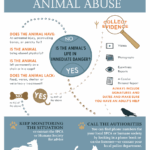The alarm rings in an echo of urgency, reverberating through the air like a clarion call. The heart races at the thought of a pet in distress, potentially facing an imminent peril. In such moments of anxiety, one might instinctively reach for their mobile device, dialing 911 in a frenzied bid to secure aid for their furry companions. Yet, what transpires after that fateful connection is often shrouded in ambiguity, leaving many pet owners in a state of uncertainty. This examination aims to unravel the intricacies of calling 911 for animal rescue, illuminating the processes and considerations entwined in this critical action.
First and foremost, it is paramount to ascertain the nature of the emergency. Is it a life-threatening situation for a beloved cat or a dog that has gone astray in the chaos of a storm? Different scenarios engender distinct responses. In instances where a pet has sustained injuries due to an accident, calling 911 is not an unreasonable course of action. Emergency services are primarily designed to respond to human calamities; however, they are often equipped with protocols that extend to the protection of animals in critical situations.
Upon receiving a call, the 911 operator listens attentively, bracing for the nuances of the crisis presented. This initial interaction, akin to the opening stanza of a grand symphony, sets the tone for the ensuing orchestration of care. The operator may ask questions to gauge the severity of the situation—“What kind of animal is in trouble? Is the animal posing a threat to others? Where exactly is this happening?” Each question builds a greater understanding, helping to direct the appropriate resources to the scene.
Understanding the nuances of local emergency protocols is crucial, as services can vary vastly from one jurisdiction to another. In urban areas, the bustling pulse of city life may afford more comprehensive resources for animal emergencies, with specialized animal control officers at the ready to navigate the labyrinth of the city streets. Conversely, in rural locales, the path to assistance may be more circuitous, rooted in a community that prioritizes livestock health over domestic pets. Therefore, it’s worthwhile to be acquainted with local animal welfare organizations, who may offer alternative assistance without the requisite of a 911 call.
Once the proper authorities are notified, the waiting begins. This period can feel interminable, as anxiety intertwines with hope. During this interlude, it is vital to remain calm, for frayed nerves can exacerbate the situation. If safe to do so, vigilant monitoring of the animal can provide critical insights—does the pet exhibit signs of distress, or is it simply frightened but otherwise unharmed? The more one can convey about the pet’s condition upon arrival of the responders, the better equipped they will be to render aid effectively.
The convergence of emergency responders at the scene is akin to the arrival of modern-day knights, brandishing their tools in the quest to restore order. The team may consist of paramedics, animal control officers, or law enforcement, each bringing a unique set of skills and expertise to address the predicament. Trained to respond to a myriad of emergencies, these individuals have been equipped not only with the capacity to assist humans but also to provide humane care for animals.
Once on-site, the responders will assess the situation—this assessment is rigorous and methodical, as lives often hang in the balance. They will identify the animal’s state, prioritize its needs, and determine whether immediate transportation to a veterinary facility is warranted. Herein lies the crux of the challenge: animals cannot articulate their pain or needs in human language. The ability of the responders to read body language and subtle cues can be the difference between life and death.
During the rescue, it is essential for the pet owner to provide any relevant background. Was the pet previously ill? Have they been diagnosed with any conditions? The clarity of this information not only enhances the quality of care but fosters an environment where medical professionals can make informed decisions swiftly. The intertwining of human and animal care is a delicate ballet, with each participant playing a crucial role in the outcome.
Once the immediate danger has subsided and the animal is en route to medical assistance, a cascade of emotions often ensues. Relief, anxiety, and hope mingle in a tumultuous dance, leaving the pet owner contemplating their next steps. Recovery can be an arduous journey—financial considerations, follow-up care, and emotional healing all come into play. The psychological toll of this ordeal can weigh heavy, as the bond between human and animal is sacred and profound.
In reflecting upon the experience of calling 911 for an animal rescue, one cannot overlook the broader impassioned discussion regarding animal welfare and emergency services. This intersection of public safety and compassionate care unveils a myriad of ethical considerations. Are we equipping emergency responders with the training necessary to handle animal abuse cases or to understand animal behavior? Are communities fostering dialogue around responsible pet ownership? Such discussions pave the way for progress, shaping the future of animal care in emergency situations.
Ultimately, the act of calling 911 for an animal in crisis encapsulates the complexities of our relationships with those we care for. It serves as a reminder of the intertwined nature of our lives—an intricate web where human and animal lives connect in pursuit of safety and wellbeing. Understanding the critical dynamics at play can empower pet owners to act decisively and effectively, ensuring the best possible outcomes for their treasured companions.







